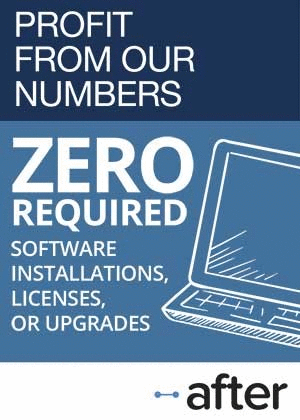Electronics Warranty Report:
Although not as pronounced as in the automotive industry, and not as unseen as in the aerospace industry, there is definitely a gap in the high-tech sector between the warranty expense rates of OEMs and their suppliers. Makers of computers, telecom equipment, and medical devices have much higher warranty costs than disk drive or semiconductor manufacturers.
The pattern of warranty expenses in the electronics sector is not all that different from the automotive business. The consumer-facing nameplates -- the OEMs whose merchandise sells under well-known brands -- pay the most and pay the highest percentage of their sales revenue on warranty costs, while their suppliers pay less and do so at a much lower expense rate.
To reach this conclusion, we started with a list of 674 U.S.-based electronics manufacturers that have reported claims payments at some point since 2003. There were 188 telecom and data network equipment manufacturers among them, plus 171 makers of medical and scientific instruments. There were 154 semiconductor and printed circuit board manufacturers. There were 35 consumer electronics manufacturers. And then the balance were from the computer industry: making desktop computers, laptops, tablets, smartphones, data storage systems, or computer peripherals such as scanners, monitors, and printers.
For each company, we examined their annual reports and quarterly financial statements, extracting four essential metrics from each: the amount of claims paid, accruals made, warranty reserves held, and product sales made. And then we used those metrics to create two additional measurements: the claims rate as a percentage of sales, and the accrual rate as a percentage of sales.
All At Once This Year
Usually, in past years, we have evaluated each industry separately. This year, we're going to attempt to do them all at once, though we may revisit some such as telecom and medical equipment in a few weeks. Based on what we've seen in the automotive and aerospace industries, we want to see what the relationship between OEMs and suppliers looks like in the electronics industry, in terms of warranty spending and expense rates.
In the March 23 newsletter, in Figure 6, we detailed the claims payments of the 674 companies over the past 14 years. So in this week's newsletter, let's assume it's included here by reference, so we don't have to repeat it again.
In that chart, we found that electronics manufacturers paid out nearly $9.55 billion in claims last year, and that total was down almost $300 million from 2015. The biggest decline came from the data storage industry, but rather than reflecting any real cost savings, it was due mostly to the departure of EMC Corp., which went private and merged with Dell Inc. in September.
Another major departure came from Lexmark International Inc. The printer manufacturer was acquired by Chinese investors in November, and therefore never filed an annual report for the full year. But other peripherals manufacturers more than made up for that departure with gains of their own, so the group's annual claims payments declined from $327 to $297 million.
Computer OEMs, which we're defining as the group of companies whose name brands are prominent on their systems sold to end user customers, also saw a decline in claims payments. However, both telecom equipment OEMs and consumer electronics OEMs saw slight increases in claims payments, while medical and scientific instrument OEMs saw a slight decline.
Warranty Accruals
With warranty accruals, much the same pattern developed, with the exception of the medical and scientific instrument OEMs, which saw a slight increase in the amounts they set aside for accruals in 2016. As can be seen in Figure 1, the telecom equipment manufacturers saw a $125 million increase, consumer electronics OEMs saw a $20 million increase, and medical and scientific instrument OEMs saw a $6 million increase.
But the biggest change was the $668 million decline in accruals reported by the computer OEMs. And that was driven primarily by a $474 million decline in accruals made by Apple Inc., and a $168 million decline in accruals made by HP Inc. We should note that while Apple is on a fiscal year ended September 24, 2016, we measured its accruals during the four calendar quarters of 2016. For HP, whose fiscal year ends in October, we mapped their four fiscal quarters to the four calendar quarters, despite the two-month digression in the data.
Apple, of course, is now one of the world's largest providers of limited warranties, as measured by the $4.7 billion it spent on claims last year ($1 billion more than GM, but only half of what VW paid out). Most of that was spent on iPhone warranties, though of course the company still manufactures desktops, laptops and tablets. In this week's charts, we're counting Apple as a computer OEM, reasoning that a smartphone is much more than just a handset for phone calls or another piece of consumer electronics.
All told, the high-tech electronics manufacturers accrued $8.85 billion last year, down about $729 million from 2015 levels. It was the third straight annual decline, coming off the 2013 industry peak, when we counted $10.85 billion in warranty accruals. Figure 1 tracks accruals made by U.S.-based companies in seven high-tech industries since 2003.
Figure 1
Worldwide Warranty Accruals Made
by U.S.-based High-Tech Manufacturers
(in US$ millions, 2003-2016)

Note in Figure 1 that, at least in terms of warranty expenses, the computer OEMs are by far the dominant industry out of the seven high-tech sectors we follow. The reason, of course is Apple. Second-largest are the telecom OEMs, followed by one of the other five industry sectors, depending on the year.
Also note that the consumer electronics sector is by far the smallest of the seven. That's because most of the consumer electronics products sold in the U.S. are made by non-American firms. One huge exception is Microsoft Corp., which makes electronics products such as the Xbox gaming console, which from 2007 to 2009 accounted for the bulge in consumer electronics accruals.
Other big declines in accruals were reported by IBM Corp., NetApp Inc., Western Digital Corp., and Seagate Technology. On a relative basis, the NetApp decline was huge, representing a reduction in accruals of more than half its 2015 total, which is one reason why it made it onto three of the top 10 lists in our March 16 newsletter.
Warranty Reserves
The net effect of all these gains and declines in claims and accruals is a change in the cumulative balances of the funds that the 674 electronics manufacturers keep on reserve in order to pay their warranty expenses. In Figure 2, we've added together all of the year-end balances for these companies since 2003, and once again we see a multi-year decline.
Figure 2
Worldwide Warranty Reserves Held
by U.S.-based High-Tech Manufacturers
(in US$ millions, 2003-2016)

In 2014, the balances of all the warranty reserve funds in all of these industry sectors topped out at $11 billion. In 2015, their balances declined by $420 million. In 2016, they declined another $900 million, to just under $9.7 billion.
The biggest driver of the reduced reserves was once again Apple, which reduced its calendar-year-end balance from $5.24 billion in 2015 to $4.7 billion in 2016. But HP's balance fell by more than $200 million, while the reserves of spin-off Hewlett Packard Enterprise Co. fell by $26 million, and IBM's fell by $25 million. Those are most of the reasons for the $797 million decline in reserves reported by the computer OEMs.
Other big declines were reported by the data storage system manufacturers. But once again, this was driven by the departure of EMC from the list, although NetApp cut its reserves by almost a third. Western Digital, meanwhile, boosted its reserves by $88 million last year, but this was due primarily to its acquisitions. And then in the medical and scientific category, Medtronic cut its reserves by $27 million while Danaher Corp. cut its reserves by $59 million.
Electronics OEMs vs. Suppliers
But rather than focus on the individual companies, let's take a look at all 674 of them as either OEMs or as suppliers. Let's assume that all of the computer companies are OEMs, and all the consumer electronics companies as well. Let's assume that all the semiconductor and printed circuit board manufacturers are suppliers. Telecom and medical/scientific we'll put into the OEM category, though some are more like suppliers. Data storage and peripherals we'll count as suppliers, though some appear to be more like OEMs.
If we break the 674 companies into two groups in this manner, we're left with 418 electronics OEMs, and 256 suppliers. As can be seen in Figure 3, the bulk of the claims are paid by the OEMs, theoretically to their repair organizations and customers. Only 12% to 20% are paid by the suppliers, theoretically to the OEMs who are their customers, in order to reimburse them for claims they paid to their customers.
In 2016, the split was $8.36 billion paid by OEMs and $1.19 billion paid by suppliers. That was the most lopsided distribution of all 14 years, no doubt caused in part by the departures of EMC, Lexmark, and a few other major suppliers. But the years 2012 to 2015 are not far behind, and those years included some major departures on the OEM side (such as Dell going private). So it's not just about companies leaving.
Figure 3
Worldwide Warranty Claims Paid
by U.S.-based High-Tech Manufacturers
(in US$ millions, 2003-2016)

The OEMs also have a big lead in terms of accruals made. Figure 4 uses the same data as in Figure 1, but reorganized into either OEM or supplier. Here, the OEMs once again account for 80% to 88% of the total, and once again they sat at the high end of that range in recent years.
Notice also that the electronics suppliers in Figure 4 have reduced their accruals for six consecutive years running, since way back in 2010-11. Meanwhile, the OEMs are in their third consecutive year of accrual reductions. And for both groups, comparing Figures 3 and 4, the reductions in the annual totals for accruals began to fall before the total for claims did, as one would expect given the lag time between projected and actual expenses.
Figure 4
Worldwide Warranty Accruals Made
by U.S.-based High-Tech Manufacturers
(in US$ millions, 2003-2016)

In 2016, accruals fell by $537 million for the OEMs and by $192 million for their suppliers. But on a proportional basis, the decline was much bigger for the electronics suppliers than for the OEMs. Again, that has a lot to do with the departures of large warranty providers such as EMS and Lexmark from the data set.
Warranty Expense Rates
So we've established that the OEMs account for the vast majority of the total warranty expenses. Now, let's look at what those totals represent as a percentage of sales revenue.
In Figure 5, we're taking the totals from Figures 3 and 4 and comparing them to product sales revenue. And since private companies also don't report revenue, when companies such as EMC and Lexmark drop out, they do so completely. So any gains or declines are due solely to the companies that remain.
It becomes immediately clear in Figure 5 that the electronics OEMs have higher warranty expense rates than their suppliers. In most years, the gap between the two groups is around 0.7% or 0.8%, though it's been as high as 1.1% (accrual rates in 2016) and as low as 0.5% (claims rates in 2003).
Figure 5
All U.S.-based High-Tech Companies
Average Warranty Claims & Accrual Rates
(as a % of product sales, 2003-2016)

And not only is the gap persistent, but it's also between pairs of lines that represent consistent reductions. In other words, both the OEMs and their suppliers are cutting their warranty costs as a percentage of sales, and have both been doing so for all but a handful of the past 14 years. Last year was the first in a while that saw an increase in accrual rates for both groups.
In fact, almost two-thirds of the time, the expense rates have declined from one year to the next. And the accrual rates decline slightly more often from one year to the next than do the claims rates. This is important because it signals what the warranty providers themselves expect to happen, as opposed to claims, which is what actually happens.
Computer Industry Example
We saw much the same pattern in the automotive industry: suppliers pay 10% to 15% of the total warranty expense, and there's always a gap between the expense rates that the OEMs and their suppliers pay. But in the automotive industry, we also found that the suppliers who manufactured powertrain components such as engines and transmissions had expense rates much closer to the OEMs.
We can't find that in the computer industry. If we consider the data storage component manufacturers to be analogous to Cummins and Allison Transmission, then companies such as Western Digital and Seagate should have warranty expense rates close to those of IBM and HP. But in fact, we find the opposite.
At the end of calendar 2016, HP's claims rate was 3.3% while IBM's was 2.8%. Seagate's was 1.0% while Western Digital's was 0.7%. So that gap between two top computer OEMs and some of their "powertrain" suppliers is larger than was the case in general with all the electronics manufacturers included in Figure 5.
But let's look just at the computer OEMs, the data storage companies, and the peripheral manufacturers. In Figure 6 we're comparing their claims rates, and in Figure 7 we're comparing their accrual rates.
For claims rates, the gap between the computer OEMs and their suppliers averages 1.3%, though it's been as high as 2.0% and as low as 0.8%. Expense rates have been closest in years such as 2003 and 2004, and farthest apart in years such as 2006 and 2008.
Figure 6
All U.S.-based Computer Companies
Average Warranty Claims Rates
(as a % of product sales, 2003-2016)

For accrual rates, the gap between the computer OEMs and their suppliers averages 1.5%, though it's been as high as 2.2% and as low as 0.6%. So not only is the gap a little wider with accruals than with claims, but it's also more variable.
Also, the gap appears to be widening in recent years. For instance, the gap between computer OEMs and peripheral manufacturers was 1.7% last year and 1.8% in 2013. That's almost three times as large a gap as was seen in 2007.
Figure 7
All U.S.-based Computer Companies
Average Warranty Accrual Rates
(as a % of product sales, 2003-2016)

Note also that for both claims rates and accrual rates, the data storage companies start higher and finish lower than do the peripherals manufacturers, with crossovers in 2006 and 2008. In other words, the data storage companies have a better long-term track record of cutting warranty costs than do the peripheral manufacturers, whose expense rates have remained close to 1.5% for most of the past 14 years. And they have done this in spite of having a consumer-facing brand-name retail sales operation, which partially turns them into OEMs.
Inefficiency of the Middleman?
The biggest reason for the gap is the nature of the warranties within each group. As in the automotive industry, the customers of most of the suppliers are the OEMs. But as in the trucking and RV industries, some of the suppliers issue their warranties directly to end users, rather than to an OEM. And we think it is the inefficiency of the middleman that causes the gap.
Some of the inefficiency comes from an inability of the OEMs to find a root cause quickly enough and then bill it back to the correct suppliers. Part of the inefficiency comes with an inability to bill back labor costs properly (i.e. a dollar part taking an hour to replace). And part of the inefficiency comes from goodwill, fraud, and other factors that cause the OEMs to pay more claims than they can recover (i.e. no trouble found).
But most of the inefficiency comes from the answer to one simple question: is the warranty issued to the end user, to an OEM, or to another supplier? If it's one of the latter, in almost every industry we find the expense rates to be lower. Next week, we'll look at the homebuilding industry, but we expect to find the same pattern there.









